Stoney Creek Trail — Abbotsford, BC
Fauna
This is a display of trail Fauna (animal life), as opposed to the Flora (plant life).
Insects
The south end of the trail, Hemlock Hill, is usually the best place to go looking for insects and gastropods because it is not mowed and there are fewer people and dogs due to the climb required to get there.
(Click on the heading to see interesting details about each species.)
Ants
Ants are small, social insects belonging to the family Formicidae and the order Hymenoptera, which also includes bees and wasps. They are known for their complex colony structures, cooperative behavior, and division of labor. Most ant colonies consist of a queen (or queens), sterile female workers, and male ants whose primary role is reproduction.
Pavement ant
(Tetramorium caespitum)
Western thatching ant
(Formica obscuripes)
Bees
Bees are flying insects belonging to the superfamily Apoidea, known for their role in pollination and, in the case of the best-known species—the honeybee (Apis mellifera)— for producing honey and beeswax. They are closely related to wasps and ants, and are found on every continent except Antarctica. Bees are vital to both natural ecosystems and human agriculture, making their conservation a global priority.
Wilke's mining bee
(Andrena wilkella)
/family Andrenidae/20250702 Bi-coloured miner bee (Andrena bicolor).jpg)
Bi-coloured miner bee
(Andrena bicolor)
/family Apidae/20220610 Western honey bee (Apis mellifera).jpg)
Western honey bee
(Apis mellifera)
/family Apidae/20220613 Fuzzy-horned bumble bee (Bombus mixtus).jpg)
Fuzzy-horned bumble bee
(Bombus mixtus)
/family Apidae/20220827 Eastern bumble bee (Bombus impatiens).jpg)
Eastern bumble bee
(Bombus impatiens)
/family Apidae/20240527 Orange-rumped bumble bee (bombus melanopygus).jpg)
Orange-rumped bumble bee
(bombus melanopygus)
/family Halictidae/20240503 White-banded sweat bee (Lasioglossum leucozonium).jpg)
White-banded sweat bee
(Lasioglossum leucozonium)
/family Megachilidae/20230514 Blue Mason bee (Osmia caerulescens).jpg)
Blue mason bee
(Osmia caerulescens)
Beetles
Beetles are insects belonging to the order Coleoptera, which means “sheathed wing”—a reference to their hardened front wings that protect the delicate flying wings underneath. Distinctive features include: a) a tough, often shiny exoskeleton; b) a body sructure divided into head, thorax, and abdomen with six legs; c) two pairs of wings; and d) mandibles (chewing mouthparts), unlike true bugs which have piercing-sucking mouthparts. With over 400,000 described species, beetles represent the largest animal order on Earth.
/20230430 Roundneck sexton beetle.jpg)
Common sexton beetle
(Nicrophorus vespilloides)
/20240702 Flower beetle.jpg)
Flower beetle
(Dasytes plumbeus)
/20250227 Winter firefly beetle.jpg)
Winter firefly
(Ellychnia corrusca)
/20250904 Lady beetle.jpg)
Asian ladybeetle
(Harmonia axyridis)
Bugs
True bugs belong to the order Hemiptera, a large group of insects defined by several key traits: a) piercing-sucking mouthparts (a beak or proboscis) used to feed on plant sap, other insects, or blood; b) forewings with a distinctive structure—thickened and leathery at the base, membranous at the tip; and c) incomplete metamorphosis, progressing through three stages: egg → nymph → adult, without a pupal stage.
/20210618 brown marmorated stink bug.jpg)
Brown marmorated stink bug
(Halyomorpha halys)
/20230606 Meadow froghopper.jpg)
Meadow froghopper
(Philaenus spumarius)
/20230912 Red-cross shield bug.jpg)
20230912 Red-cross shield bug
(Elasmostethus cruciatus)
/20240510 White-margined burrow bug (sehirus cinctus).jpg)
White-margined burrow bug
(Sehirus cinctus)
Dragonflies
Dragonflies are flying insects in the order Odonata, suborder Anisoptera. They are distinguished by: a) two pairs of strong, transparent wings that can move independently; b) large compound eyes offering nearly 360° vision; and c) long, slender bodies and powerful, agile flight.
Dragonflies undergo incomplete metamorphosis: they begin life as aquatic nymphs (naiads), which live in water and molt several times before emerging as winged adults—without passing through a pupal stage.
/20240607 Whitetail skimmer on HH-cropped copy.jpg)
Whitetail skimmer
(Plathemis lydia)
/20250603 Canada darner (Aeshna canadensis) in grass on HH-cropped copy.jpg)
Canada darner
(Aeshna canadensis)
Flies
Flies belong to the order Diptera, meaning “two wings.” Their defining features include: a) one pair of functional wings, with the second pair reduced to tiny stabilizers called halteres; b) large, compound eyes that provide wide-angle vision; c) mouthparts adapted for sponging, piercing, or sucking—depending on the species; and d) rapid reflexes and exceptional flight control, enabling quick takeoff and agile maneuvering.
/20210315 american salmonfly copy.jpg)
American salmonfly
(Plathemis lydia)
/20220807 Flower fly (Eristalis arbustorum) on a Tansy ragwort 02-cropped 01 copy.jpg)
Flower fly
(Eristalis arbustorum)
/20230414 may fly on Indian plum at SB-cropped copy.jpg)
May fly
(Ephemeroptera)
/20230425 Golden dung fly on HH-cropped copy.jpg)
Golden dung fly
(Scathophaga stercoraria)
/20230430 Green bottle fly-cropped copy.jpg)
Green bottle fly
(Lucilia sericata)
/20230612 Western caligrapher flower fly (Toxomerus occidentalis)-cropped.jpeg)
Western caligrapher fly
(Toxomerus occidentalis)
/20240605 Locust blowfly-cropped copy.jpg)
Locust blowfly
(Stomorhina lunata)
Gastropods
Gastropods ("stomach foot") are a class of mollusks that include snails and slugs. They have soft, muscular bodies and a head bearing tentacles and eyes. Both use a radula—a ribbon-like organ with tiny teeth—to feed, and they move by gliding on a mucus-covered foot. Snails have coiled external shells for protection and moisture retention, while slugs lack external shells, making them more vulnerable to drying out. Most are herbivores or detritivores, thriving in damp environments.
Arion ater, commonly known as the black slug, displays a remarkable range of colours due to genetic variation and environmental influences. Though typically black, individuals may also appear grey, brown, orange, brick-red, or even white. Juveniles often start out ivory or brown, gradually darkening as they mature.
.jpg)
Black slug
(Arion ater)
.jpg)
Black slug
(Arion ater)
.jpg)
Black slug
(Arion ater)
The Cepaea and the Helicinae snails are in the same family. The grove snail (Cepaea nemoralis) exhibits a striking variety of shell colours and banding patterns that vary widely, even within local populations. Lighter, banded shells are more common on those in sunny, open habitats where they help reduce overheating, while darker, unbanded shells dominate in shaded woodlands, offering better camouflage.
-cropped.jpg)
Cepaea
.jpg)
Helicinae
.jpg)
Brown lipped grove snail
(Cepaea nemoralis)
The Cepaea nemoralis is native to Europe and has been introduced to North America. It has a rounded shell with bright colours and variable banding patterns.
Monadenia is native to the Pacific Northwest, including British Columbia. Its shell is larger, pear-shaped, and often features a single contrasting band or mottled pattern. Cepaea is a herbivore and often a garden pest, while Monadenia feeds primarily on lichens and fungi and plays a valuable role in native ecosystems.
1.jpg)
Brown lipped grove snail
(Cepaea nemoralis)
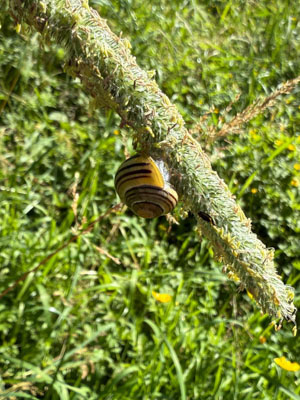
Brown lipped grove snail
(Cepaea nemoralis)
.jpg)
Pacific Sideband
(Monadenia fidelis)
Moths
Moths are insects in the order Lepidoptera. They are the nocturnal cousins of butterflies. While butterflies steal the daytime spotlight, moths dominate the night with incredible diversity and subtle beauty. Their distinctive characteristics are: a) wings often covered in tiny scales, often displaying muted or camouflaged colors; b) antennae that are typically feathery or threadlike (in contrast to butterflies, which have clubbed tips); c) a generally stout and furry body, which helps retain warmth during nighttime activity; and d) strong flight capabilities. Moths undergo complete metamorphosis: egg>larva>pupa>adult.
/20231020 Tiger moth caterpillar (Pyrrharctia isabella) copy.jpg)
Tiger moth caterpillar
(Pyrrharctia isabella)
/20240926 Sphinx moth caterpillar 01 copy.jpg)
Sphinx moth caterpillar
(Sphingidae)
/20250817 Elephant hawk moth 01-cropped copy 2.jpg)
Elephant hawk moth caterpillar
(Deilephila elpenor)
Spiders
Orbweaver and cobweb spiders are web-building arachnids. Orbweavers (family Araneidae) are known for their large, symmetrical, wheel-shaped webs built out in open spaces. They are usually harmless to humans and help control insect populations. They are often brightly colored, with rounded abdomens. Cobweb spiders (family Theridiidae), by contrast, spin irregular, tangled webs often found in corners, under furniture, or in sheltered outdoor spots. While their webs appear messy, they are highly effective at trapping prey.
/20250828 Orbweaver spider-cropped copy.jpg)
Crowned orbweaver
(Araneus diadematus)
/20250904 Cobweb spider (Theridion varians) on alder leaf-cropped copy.jpg)
Cobweb spider
(Theridion varians)
Wasps
Wasps are flying insects in the order Hymenoptera, which also includes bees and ants. They are known for: a) two pairs of membranous wings, with the forewings larger than the hindwings; b) narrow waists separating the thorax and abdomen, giving them a distinctive body shape; c) chewing or lapping mouthparts, though some species also have stingers derived from ovipositors; and d) complete metamorphosis—developing through four stages: egg → larva → pupa → adult.
Wasps vary widely in behavior: some are solitary hunters, while others are social and live in colonies. Many species play key roles as pollinators or natural pest controllers.
/20240725 Bald-faced hornet (dolichovespula maculata).jpg)
Bald-faced hornet
(dolichovespula maculata)
/20250708 Golden paper wasp 03-cropped copy.jpg)
Golden paper wasp
(Polistes aurifer)
/20250904 wasps on morsel HH 02-croppeed.jpg)
Yellowjacket wasp
(Dolichovespula arenaria)
Crustaceans
Crinocheta
Crinocheta (woodlice), also known as sowbugs and pillbugs, are terrestrial crustaceans often mistaken for insects. Key characteristics include: a) a segmented, armored exoskeleton made of overlapping plates, allowing flexibility and protection; b) seven pairs of legs—more than insects, which have six; c) two pairs of antennae; and d) a preference for damp, dark environments, as they breathe through gill-like structures that require moisture.
Woodlice undergo simple metamorphosis, hatching as miniature versions of adults and molting as they grow. Some species can roll into a ball as a defense mechanism.
.jpg)
Striped Woodlouse
(Philoscia muscorum)
Crayfish
The crayfish is a freshwater crustacean closely related to lobsters and shrimp. It has a hard exoskeleton, two large front claws, a segmented body, and eight walking legs. The claws are used for defense and for capturing food, while its tail allows it to swim backward quickly when escaping danger. Crayfish are opportunistic, omnivorous scavengers, with the ability to filter and process sediment in order to ingest animal and vegetable matter. Crayfish are used by scientists to monitor water quality because they’re sensitive to pollution.
.jpg)
Signal crayfish
(Pacifastacus leniusculus)
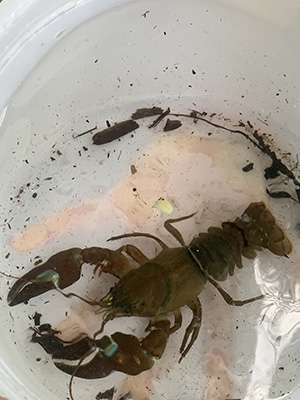
Birds
Birds are warm-blooded vertebrates belonging to the class Aves. They are found on every continent, in almost every habitat. To enable flight (although not all species fly), birds have these characteristics: a) forelimbs that have evolved into wings; b) feathers, which provide thrust, insulation and camouflage; c) a high metabolic rate to supply energy demands; and d) hollow bones for flight efficiency. As well, their vision is often keener than that of humans, which is vital for hunting and navigation.
Birds exhibit a wide variety of calls and songs used for communication, territory defense, and mating. Migration is common, with many species travel thousands of kilometers seasonally. They play important roles as pollinators, seed dispersers, and insect controllers.
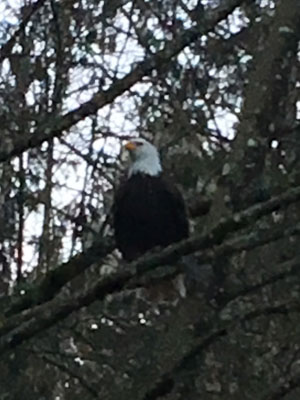
Bald eagle
(Haliaeetus leucocephalus)
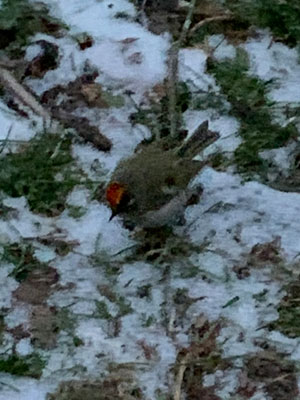
Ruby-crowned kinglet
(Corthylio calendula)
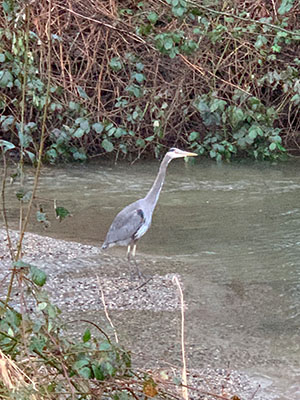
Great blue heron
(Ardea herodias)
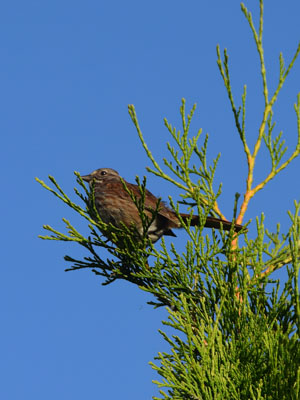
Song sparrow
(Melospiza melodia)
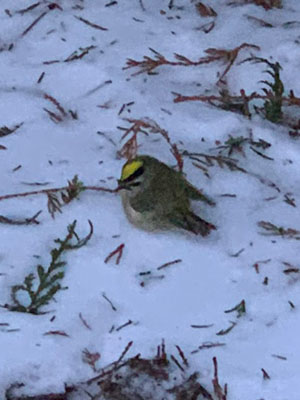
Golden-crowned kinglet
(Regulus satrapa)
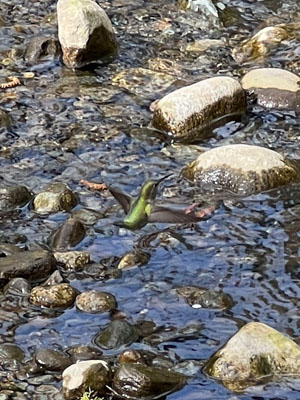
Black-chinned hummingbird
(Archilochus alexandri)
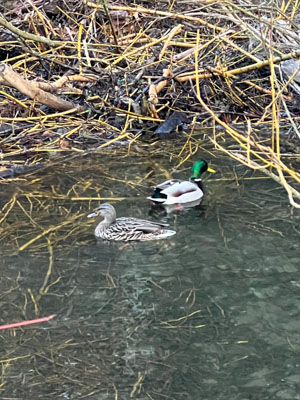
Mallard duck
(Anas platyrhynchos)
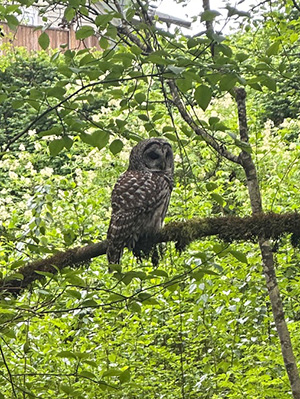
Barred owl
(Strix varia)
Mammals
Mammals are warm-blooded vertebrates with the following characteristics: a) hair or fur on their bodies; b) females that produce milk from mammary glands to feed their young; c) most give birth to live young (except monotremes like the platypus and echidna, which lay eggs) and; d) a four-chambered heart and a highly developed brain.
Mammals are found in nearly every environment, from oceans (for example, whales and dolphins) to deserts (camels and kangaroo rats) and forests (deer and squirrels).
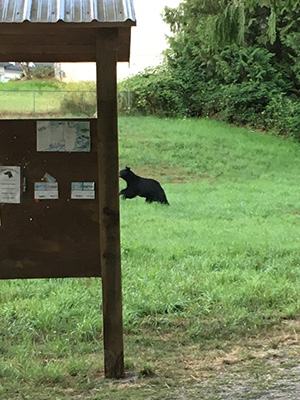
Black bear
(Ursus americanus)
.jpg)
Eastern cottontail rabbit
(Sylvilagus floridanus)
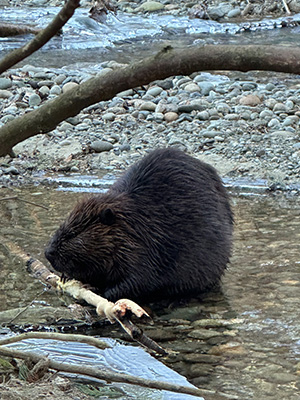
Beaver
(Castor canadensis)
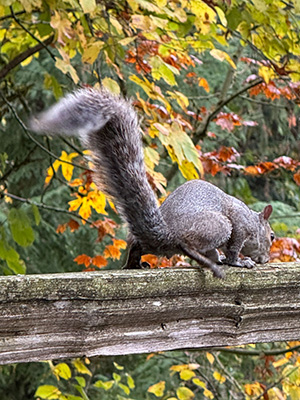
Grey squirrel
(Sciurus carolinensis)
Dog
(Canis familiaris)
/20210623 Pavement ants 03-cropped copy.jpg)
/20240414 Western Thatching ant on Vine Maple 02-cropped copy.jpg)
/family Andrenidae/20240605 Wilke's mining bee (Andrena wilkella).jpg)